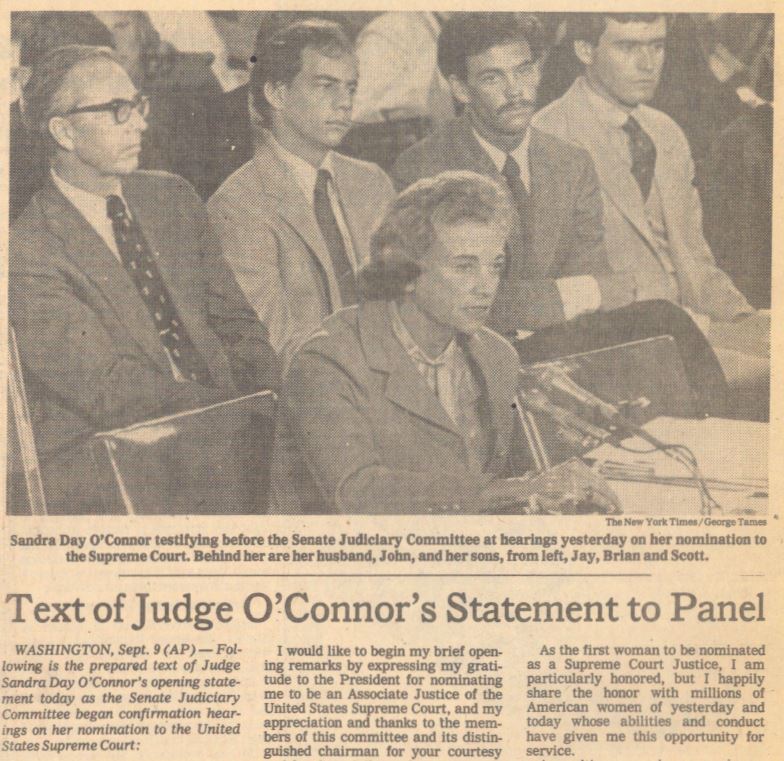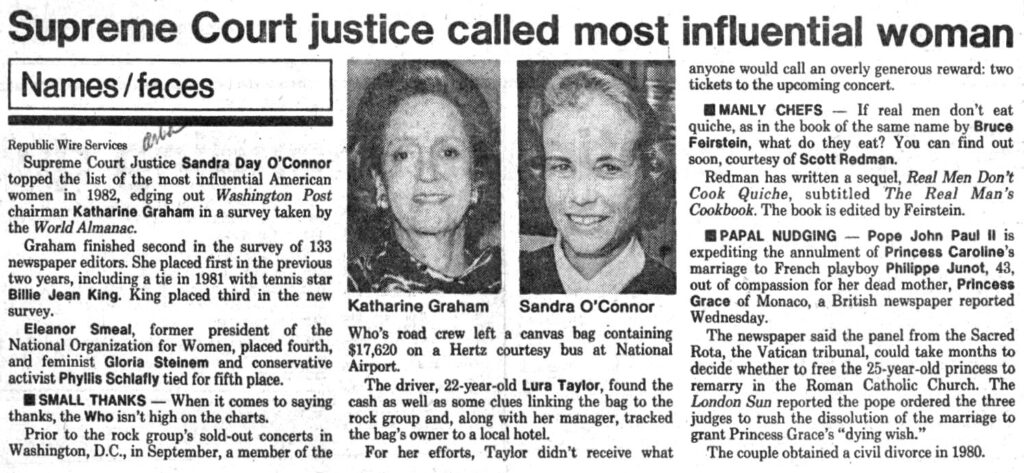The Nomination of Mrs. O’Connor
THE DECISION of President Reagan to nominate Sandra Day O’Connor of Arizona for a seat on the Supreme Court is far more than the fulfillment of a campaign commitment. It marks the end of a long road for all those women who have ever practiced or aspired to practice law. Just 109 years ago, the court on which Judge O’Connor will sit if the Senate confirms this nomination upheld the power of the states to prevent women from becoming lawyers. The vestiges of the thinking that produced that now unthinkable discrimination linger on. But the ascension of Judge O’Connor to the nation’s highest court would help eliminate more of them, regardless of how she votes on constitutional questions. The fact that a woman has, at long last, been selected for one of these seats of great power will make the continuance of sexual barriers in lesser jobs more difficult to justify. In some ways, when you think of it, it is incredible .that this should have to come as such a momentous event in 1981, that it should have this aspect of novelty and “breakthrough” to it. And we hasten to suggest that it will merely compound the grotesque thinking that has created such a situation if the great ‘legal and political powers-that-be regard a seat on, the court for one female as some kind of equity. Female justices should not be considered as some oneof-a-kind token or representative or quota-filler. Mr. Reagan has helped redeem the shame of his predecessors who wouldn’t quite dare to do what he has done. He



